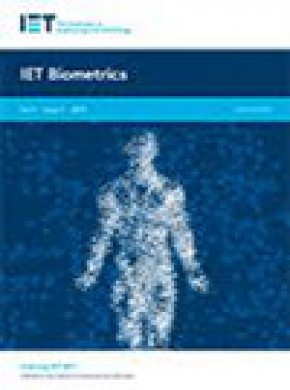
Gold OA文章占比:75.93%
OA被引用占比:0.0503...
开源占比:0.5748
研究类文章占比:94.44%
国际标准简称:IET BIOMETRICS
人气 554
《Iet Biometrics》是一本专注于COMPUTER SCIENCE, ARTIFICIAL INTELLIGENCE领域的English学术期刊,创刊于2012年,由Wiley出版商出版,出版周期Bi-monthly。该刊发文范围涵盖COMPUTER SCIENCE, ARTIFICIAL INTELLIGENCE等领域,旨在及时、准确、全面地报道国内外COMPUTER SCIENCE, ARTIFICIAL INTELLIGENCE工作者在该领域的科学研究等工作中取得的经验、科研成果、技术革新、学术动态等。该刊已被SCIE数据库收录,在中科院JCR最新升级版分区表中,该刊分区信息为大类学科计算机科学3区,2023年影响因子为1.8。
The field of biometric recognition - automated recognition of individuals based on their behavioural and biological characteristics - has now reached a level of maturity where viable practical applications are both possible and increasingly available. The biometrics field is characterised especially by its interdisciplinarity since, while focused primarily around a strong technological base, effective system design and implementation often requires a broad range of skills encompassing, for example, human factors, data security and database technologies, psychological and physiological awareness, and so on. Also, the technology focus itself embraces diversity, since the engineering of effective biometric systems requires integration of image analysis, pattern recognition, sensor technology, database engineering, security design and many other strands of understanding.
The scope of the journal is intentionally relatively wide. While focusing on core technological issues, it is recognised that these may be inherently diverse and in many cases may cross traditional disciplinary boundaries. The scope of the journal will therefore include any topics where it can be shown that a paper can increase our understanding of biometric systems, signal future developments and applications for biometrics, or promote greater practical uptake for relevant technologies:
Development and enhancement of individual biometric modalities including the established and traditional modalities (e.g. face, fingerprint, iris, signature and handwriting recognition) and also newer or emerging modalities (gait, ear-shape, neurological patterns, etc.)
Multibiometrics, theoretical and practical issues, implementation of practical systems, multiclassifier and multimodal approaches
Soft biometrics and information fusion for identification, verification and trait prediction
Human factors and the human-computer interface issues for biometric systems, exception handling strategies
Template construction and template management, ageing factors and their impact on biometric systems
Usability and user-oriented design, psychological and physiological principles and system integration
Sensors and sensor technologies for biometric processing
Database technologies to support biometric systems
Implementation of biometric systems, security engineering implications, smartcard and associated technologies in implementation, implementation platforms, system design and performance evaluation
Trust and privacy issues, security of biometric systems and supporting technological solutions, biometric template protection
Biometric cryptosystems, security and biometrics-linked encryption
Links with forensic processing and cross-disciplinary commonalities
Core underpinning technologies (e.g. image analysis, pattern recognition, computer vision, signal processing, etc.), where the specific relevance to biometric processing can be demonstrated
Applications and application-led considerations
Position papers on technology or on the industrial context of biometric system development
Adoption and promotion of standards in biometrics, improving technology acceptance, deployment and interoperability, avoiding cross-cultural and cross-sector restrictions
Relevant ethical and social issues
| 大类学科 | 分区 | 小类学科 | 分区 | Top期刊 | 综述期刊 |
| 计算机科学 | 4区 | COMPUTER SCIENCE, ARTIFICIAL INTELLIGENCE 计算机:人工智能 | 4区 | 否 | 否 |
| 大类学科 | 分区 | 小类学科 | 分区 | Top期刊 | 综述期刊 |
| 计算机科学 | 3区 | COMPUTER SCIENCE, ARTIFICIAL INTELLIGENCE 计算机:人工智能 | 4区 | 否 | 否 |
| 大类学科 | 分区 | 小类学科 | 分区 | Top期刊 | 综述期刊 |
| 计算机科学 | 3区 | COMPUTER SCIENCE, ARTIFICIAL INTELLIGENCE 计算机:人工智能 | 4区 | 否 | 否 |
| 大类学科 | 分区 | 小类学科 | 分区 | Top期刊 | 综述期刊 |
| 工程技术 | 4区 | COMPUTER SCIENCE, ARTIFICIAL INTELLIGENCE 计算机:人工智能 | 4区 | 否 | 否 |
| 大类学科 | 分区 | 小类学科 | 分区 | Top期刊 | 综述期刊 |
| 计算机科学 | 3区 | COMPUTER SCIENCE, ARTIFICIAL INTELLIGENCE 计算机:人工智能 | 4区 | 否 | 否 |
| 大类学科 | 分区 | 小类学科 | 分区 | Top期刊 | 综述期刊 |
| 计算机科学 | 4区 | COMPUTER SCIENCE, ARTIFICIAL INTELLIGENCE 计算机:人工智能 | 4区 | 否 | 否 |
中科院分区:中科院分区是SCI期刊分区的一种,是由中国科学院国家科学图书馆制定出来的分区。主要有两个版本,即基础版和升级版。2019年中国科学院文献情报中心期刊分区表推出了升级版,实现了基础版和升级版的并存过渡;升级版是对基础版的延续和改进,将期刊由基础版的13个学科扩展至18个,科研评价将更加明确。
| 按JIF指标学科分区 | 收录子集 | 分区 | 排名 | 百分位 |
| 学科:COMPUTER SCIENCE, ARTIFICIAL INTELLIGENCE | SCIE | Q3 | 136 / 197 |
31.2%
|
| 按JCI指标学科分区 | 收录子集 | 分区 | 排名 | 百分位 |
| 学科:COMPUTER SCIENCE, ARTIFICIAL INTELLIGENCE | SCIE | Q4 | 152 / 198 |
23.48%
|
JCR分区:JCR(Journal Citation Reports)由科睿唯安公司(前身为汤森路透)开发。JCR没有设置大类,只将期刊分为176个具体学科,也就是中科院分区中的小类学科。基于不同学科的当年影响因子高低进行排序,将期刊的数量均匀分为四个部分,Q1区代表学科分类中影响因子排名前25%的期刊,以此类推,Q2区为前25%-50%期刊,Q3区为前50%-75%期刊,Q4区为75%以后期刊。
CiteScore排名:
| 学科类别 | 分区 | 排名 | 百分位 |
| 大类:Computer Science 小类:Signal Processing | Q2 | 41 / 131 |
69%
|
| 大类:Computer Science 小类:Computer Vision and Pattern Recognition | Q2 | 34 / 106 |
68%
|
| 大类:Computer Science 小类:Software | Q2 | 143 / 407 |
64%
|
CiteScore值计算方式:例如2024公布的CiteScore是将统计在 2020年-2023年间年所发表文章的引用次数除以在 2020年-2023年间所发表的发文总数。
CiteScore数据来源:是由全球著名学术出版商Elsevier(爱思唯尔)基于其Scopus数据库推出的期刊评价指标。CiteScore指数以四年区间为基准来计算每本期刊的平均被引用次数,并提供期刊领域排名、期刊分区的相关信息,它的作用是测量期刊的篇均影响力。
近年中科院分区趋势图
近年IF值(影响因子)趋势图
影响因子:是美国科学信息研究所(ISI)的期刊引证报告(JCR)中的一项数据。指的是某一期刊的文章在特定年份或时期被引用的频率,是衡量学术期刊影响力的一个重要指标。自1975年以来,每年定期发布于“期刊引证报告”(JCR)。
| 国家/地区 | 发文量 |
| India | 27 |
| CHINA MAINLAND | 23 |
| USA | 16 |
| England | 12 |
| GERMANY (FED REP GER) | 12 |
| Turkey | 11 |
| Spain | 9 |
| France | 8 |
| Italy | 8 |
| Portugal | 8 |
| 文章引用名称 | 引用次数 |
| Strengths and weaknesses of ... | 24 |
| Robust gait recognition: a c... | 15 |
| Employing fusion of learned ... | 11 |
| Grey Wolf optimisation-based... | 10 |
| Unconstrained ear recognitio... | 10 |
| Secure multimodal biometric ... | 9 |
| Hybrid robust iris recogniti... | 9 |
| Domain adaptation for ear re... | 7 |
| Ear verification under uncon... | 7 |
| ScoreNet: deep cascade score... | 6 |
| 被引用期刊名称 | 数量 |
| IET BIOMETRICS | 53 |
| IEEE ACCESS | 45 |
| MULTIMED TOOLS APPL | 27 |
| SENSORS-BASEL | 24 |
| ACM COMPUT SURV | 19 |
| IEEE T INF FOREN SEC | 17 |
| PATTERN RECOGN LETT | 15 |
| EXPERT SYST APPL | 12 |
| APPL SCI-BASEL | 11 |
| NEUROCOMPUTING | 11 |
| 引用期刊名称 | 数量 |
| PATTERN RECOGN | 106 |
| IEEE T PATTERN ANAL | 99 |
| IEEE T INF FOREN SEC | 79 |
| IEEE T IMAGE PROCESS | 62 |
| IET BIOMETRICS | 53 |
| PATTERN RECOGN LETT | 49 |
| NEUROCOMPUTING | 39 |
| EXPERT SYST APPL | 26 |
| IMAGE VISION COMPUT | 22 |
| IEEE T CIRC SYST VID | 19 |
1、建议稿件控制10页以上,文章撰写语言为英语;(单栏格式,单倍行距,内容10号字体,文稿类型包含:原创研究(Original Research)、案例报告(Case Report)、文献综述(Literature Review)等;文件格式包含word、PDF、LaTeX等。
2、稿件重复率控制10%以内,论文务必保证原创性、图标、公式、引文等要素齐备,保证附属资料的完整。已发表或引用过度的文章将不会被出版和检索,禁止一稿多投,拒绝抄袭、机械性的稿件。
3、稿件必须有较好的英语表达水平,有图,有表,有公式,有数据或设计,有算法(方案,模型),实验,仿真等;参考文献控制25条以上,参考文献引用一半以上控制在近5年以内。
图片和图表要求:1、建议使用TIFF、EPS、JPEG格式 ,TIFF格式 使用LZW压缩。
2、文件大小最大不超过20MB,不要以单个文件的形式上传数据。
3、彩色图片的分辨率≥300dpi;黑白图片的分辨率在≥500dpi;line art图片类型的分辨率≥1000dpi;色彩模式建议采用RGB,除非期刊注明要CMYK。
4、线条不要细于0.25pt,也不能太粗,超过1.5pt,过细或过粗都影响美观。
5、表格一般和manuscrript放置在一个word文档里部分期刊 需要单独上传表格。
作者信息:1、包括作者姓名、最高学位,作者单位(精确到部门),邮箱,地址,邮编,关键词,内容,总结,项目基金,参考文献,作者相片+简介(一定要确保作者信息准确无误,提交稿件之后这部分不能再作改动)。
更多征稿细则请查阅杂志社征稿要求。本站专注期刊投稿服务十年,确保SCI检索,稿件信息安全保密,合乎学术规范不成功不收费,详情请咨询客服。
WILEY, 111 RIVER ST, HOBOKEN, USA, NJ, 07030-5774
若用户需要出版服务,请联系出版商:WILEY, 111 RIVER ST, HOBOKEN, USA, NJ, 07030-5774。

中科院分区 4区
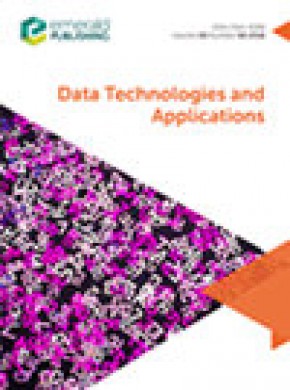
中科院分区 4区

中科院分区 4区

中科院分区 4区
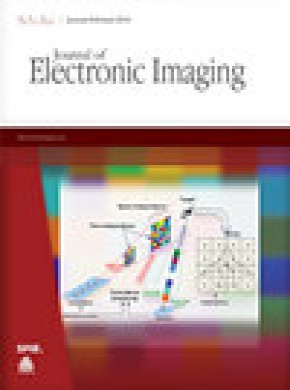
中科院分区 4区
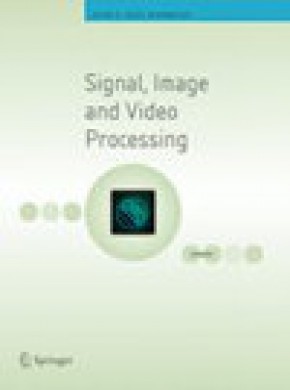
中科院分区 4区
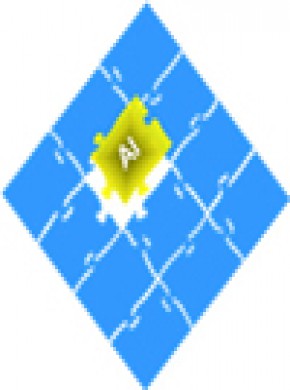
中科院分区 4区

中科院分区 4区